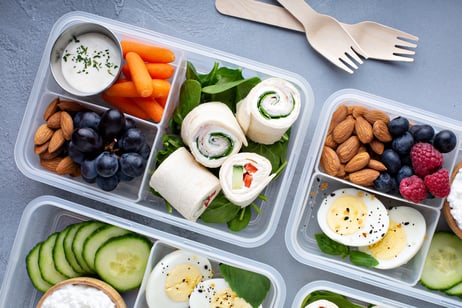 Did you know studies have shown that the average adult gains 0.88 to 1.98 pounds during the holiday season, starting the last week of November and through the first or second week of January? For many, this doesn’t come as a surprise, especially as we tend to become more sedentary due to the weather changes and often experience an increase in temptation due to frequent holiday gatherings that focus on food, limited edition “holiday” menu items, and more. This holiday season, set yourself up for success by following these dieting “dos” and “donts” during the month of December.
Did you know studies have shown that the average adult gains 0.88 to 1.98 pounds during the holiday season, starting the last week of November and through the first or second week of January? For many, this doesn’t come as a surprise, especially as we tend to become more sedentary due to the weather changes and often experience an increase in temptation due to frequent holiday gatherings that focus on food, limited edition “holiday” menu items, and more. This holiday season, set yourself up for success by following these dieting “dos” and “donts” during the month of December.
DON’T: Expect your diet to be perfect during the holidays.
DO: Plan and prepare for temptation and offsets.
Let’s be realistic. There are very few, if any, people who have a perfect diet, let alone during the holidays. The holidays are a time of celebration, with food and alcohol often taking center stage at these events. It’s important to expect and prepare for temptation and to have a plan of action for practicing moderation throughout the month. Check out these 10 Simple Ways to Stay Healthy While Celebrating the Holidays for guidance on doing so.
DON’T: Skip meals to make room for your holiday meal (or alcohol).
DO: Eat a balanced diet, no matter the day, and practice portion control.
Many people attempt to skip meals to “save up” calories for heavier meals, desserts, and alcohol; however, this approach often leads to binge eating. Instead of cutting out certain foods or practically starving yourself to make up for a big meal, stick to your normal healthy eating habits or regimen and practice moderation and portion control when consuming foods rich in calories, saturated fat, sodium and sugar.
DON’T: Overdo it with the high-calorie, high-sugar “seasonal” beverages.
DO: Opt for a smaller size or customize your drink to make it healthier for you.
Did you know a grande (16 oz) Peppermint Mocha from Starbucks® contains 440 calories, 54 grams of sugar, and 16 grams of fat? Practice moderation by ordering a tall (8 oz) with only 240 calories, 28 grams of sugar, and 10 grams of fat. Or, try customizing your drink to make it healthier by asking that your drink be made with nonfat or plant-based milk, fewer pumps of sweetener/syrup, or without toppings (such as whipped cream or chocolate shavings), all of which can save up to hundreds of extra calories!
DON’T: Skip out on exercise because it’s cold or snowy.
DO: Opt for indoor exercise!
Don’t have a gym membership? Try a free online exercise video (there are TONS on YouTube) or head to a large indoor space that allows for 10 to 15 minutes of walking, such as a mall or large department store.
DON’T: Give up after one bad day.
DO: Wake up the next day, forgive yourself, and start over.
One bad day doesn’t undo all of the progress you’ve made and won’t prevent you from having success in the future. After a poor day (or two) of eating, don’t give up or put off your goals until the next week. Instead, wake up the next day, show yourself some forgiveness, and make a plan for getting back on track.
This blog was written by Lindsey Recker, MS, RD, NIFS Registered Dietitian. To learn more about the NIFS bloggers, click here.


 As the weather turns colder and we spend more time indoors, viruses will become more active among the population. Healthy eating can help you boost your immunity. Here are five of the top choices for fighting colds and flu with food.
As the weather turns colder and we spend more time indoors, viruses will become more active among the population. Healthy eating can help you boost your immunity. Here are five of the top choices for fighting colds and flu with food. With the holidays coming up, it can be easy to get caught up in the busyness of it all. From Thanksgiving to Christmas, we are bombarded with festive meals, holiday parties, sweet treats, and family gatherings that simply interrupt our normal routine. The holiday season is one of the most difficult times to stay motivated to be healthy. Not to mention the fact that it is several degrees cooler and I would rather hibernate than go out to the gym. Plus, many of us travel to visit family and friends and we are just not close to our gym.
With the holidays coming up, it can be easy to get caught up in the busyness of it all. From Thanksgiving to Christmas, we are bombarded with festive meals, holiday parties, sweet treats, and family gatherings that simply interrupt our normal routine. The holiday season is one of the most difficult times to stay motivated to be healthy. Not to mention the fact that it is several degrees cooler and I would rather hibernate than go out to the gym. Plus, many of us travel to visit family and friends and we are just not close to our gym.  With inflation at a 40-year high and grocery costs up close to
With inflation at a 40-year high and grocery costs up close to 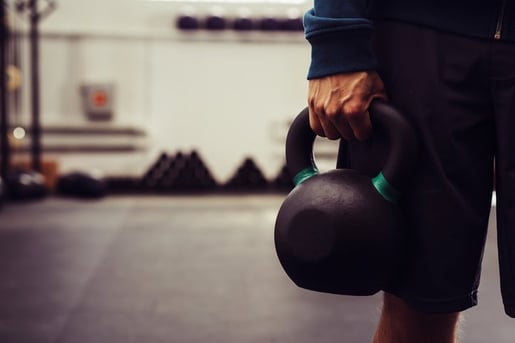 We’ve all heard that using the same workout program for a long duration is not the most effective way to train. At some point in everyone’s training life, they get into a program or workout routine that just seems to be perfect. It may be time-efficient and enjoyable, and you may see all of the improvements you set out to achieve when you started. These workout programs may last 4, 8, or 12 weeks, but they are always the hardest to switch up even if your improvements (or “gainz”) have stalled.
We’ve all heard that using the same workout program for a long duration is not the most effective way to train. At some point in everyone’s training life, they get into a program or workout routine that just seems to be perfect. It may be time-efficient and enjoyable, and you may see all of the improvements you set out to achieve when you started. These workout programs may last 4, 8, or 12 weeks, but they are always the hardest to switch up even if your improvements (or “gainz”) have stalled. Links Between Physical Exercise and Brain Health
Links Between Physical Exercise and Brain Health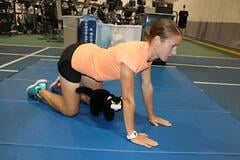
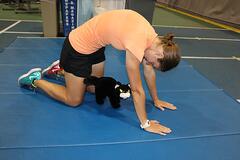
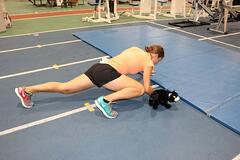
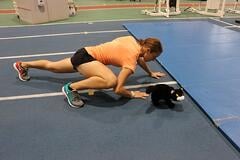
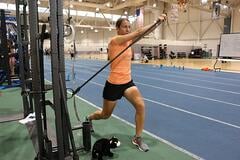
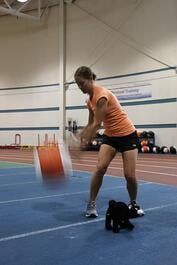
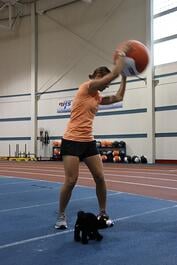
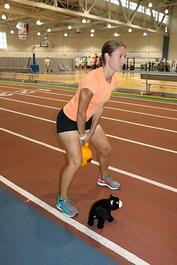
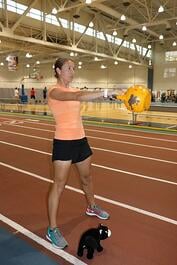
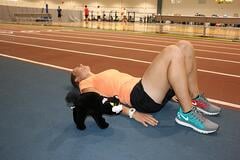
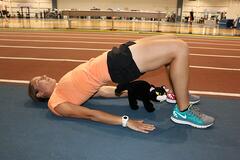


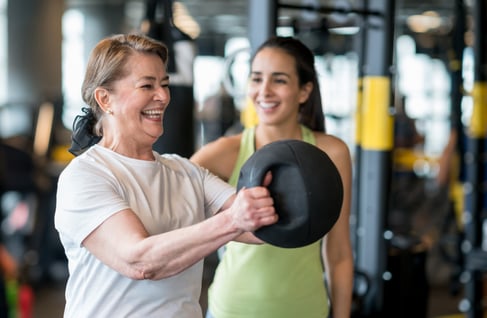 Autoimmune diseases are a family of more than 80 chronic illnesses. According to the National Institutes of Health, up to 23.5 million Americans, or more than 7 percent of the population, suffer from an autoimmune disease.
Autoimmune diseases are a family of more than 80 chronic illnesses. According to the National Institutes of Health, up to 23.5 million Americans, or more than 7 percent of the population, suffer from an autoimmune disease.  Vacation is supposed to be fun, enjoyable, and relaxing. When it comes to weight loss attempts or making healthy choices in general, however, traveling can be a challenge. Here are some of our RD’s best tips for healthy eating when traveling or on vacation.
Vacation is supposed to be fun, enjoyable, and relaxing. When it comes to weight loss attempts or making healthy choices in general, however, traveling can be a challenge. Here are some of our RD’s best tips for healthy eating when traveling or on vacation.